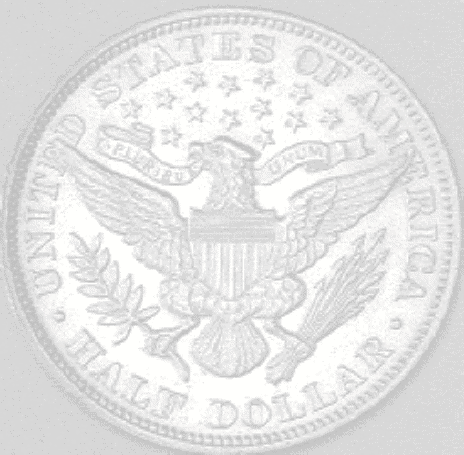
|
|
||
|
|
|
|
|
|
||

-19-
FOR BETTER OR WORSE:
The following year, Daniel Webster denied the need for a bank (White, 278). “Banks are not revenue,” Mr. Webster declared, " ...they are not the sources of national income” (White, 275). The essence of his speech was that paper is not wealth. The enormous evil of fiat or representative money is that it creates the illusion that banks create money. It teaches people to believe that which represents "money" is itself "money." Since God's Law of "a perfect and just weight and measure" has been ignored, it is little wonder that the Wall Street Journal for September 24, 1971 reported that at an International Monetary Fund seminar "eminent economists could not agree on what 'money' is or how banks create it” (Saussy, 40). Such disenfranchised, dispossessed people suffer from self-delusion --"professing themselves to be wise, they (have become) fools." (Romans 1:22)
The "Money Of Account" of the United States
In 1785, under the
Articles of Confederation, Congress adopted the Spanish dollar * as the
monetary unit of the United States (“Coins and Currency of the United
States”, 1).
*The Spanish dollar or "peso", also
known as the "pillar” dollar, was valued in New England at 6 shillings,
or 72 pence. It was divided into 8 "reals" and thus the dollar was a
"piece of eight." Each real was therefore valued at 9 pence and was
called a "ninepence."
When the United States Congress divided the dollar into 100
cents, the New England shilling was valued at 16.656 cents, or the sixth
part of a dollar. In New York, however, the dollar came to be valued at
8 shillings. And, the "real" became the "York shilling" valued at 12.5
cents called a "bit." Hence "2 bits" was valued at 25 cents and, as the
saying goes, "2 bits, 4 bits, 6 bits a dollar." --White, p. 40.
In Pennsylvania, the dollar was valued at 7 shillings 6
pence, or 90 pence, one-eighth of which was approximately 11 pence, and
was nicknamed a "levy", which was an abbreviation for "eleven." A "fip"
was an abbreviation for 5 pence, or approximately half a "levy." --page
15.
The word "plate" which comes from the Spanish word "plata" or
"silver," signified Spanish silver coin, but not bullion. Hence "old
plate" meant old coinage. – page 16, note.
The Constitutional Convention declared that
"No state shall make anything but gold and silver coin a tender in
payment of debts." (Article I, Section 10)
The Coinage Act
On April 2, 1792,
Congress passed the "Coinage Act" also known as the "Mint Act." It
declared "the money of account of the United States shall be expressed
in dollars," (“Coins and Currency of the United States”, 1) and it did 6
things. 1.) Gold and silver were made the "money of account" (“Coins and
Currency of the United States”, 1), i.e. the "money" in which people
kept their accounts and did their banking (White, 14). 2.) The "dollar"
was fixed as a weight of gold or silver (Wilber, 10). Alexander Hamilton
recommended the mint ratio of 1 to 15 (White, 40). 3.) It divided the
dollar into 100 parts (White, 15). 4.) It provided the death penalty for
any mint official who debased the coinage (Wilber, 10). Men in that day
knew such debasing would destroy the nation. 5.) It authorized any
person to bring gold or silver bullion to the mint to be coined “weight
for weight” (Yeoman, 7). And, 6.) It established a mint in Philadelphia
(“Coins and Currency”, 1).
The United States Law Code confirms, "The terms
'lawful money' and 'lawful money of the United States' shall be
construed to mean gold or silver coin of the United States" (12 United
States Code 152). And, in the case of Bank vs. Supervisors (7 Wallace
26), the Supreme Court of the United States held that the "greenback"
was a promise to pay coined dollars (White, 194). Horace White reasons
correctly when he says, "The question in the forum of morals is not what
a dollar will buy, but what a dollar is" (219).
